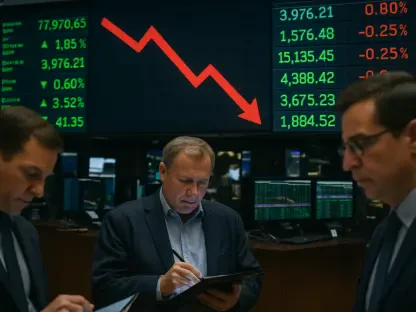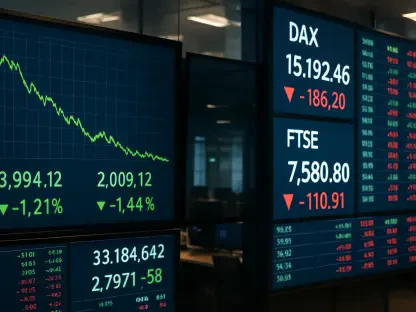In the bustling financial hub of Hong Kong, a remarkable trend has emerged as Mainland Chinese investors increasingly channel their capital into northbound Mutual Recognition of Funds (MRF) products, seeking diversified exposure to international markets while viewing Hong Kong as a vital gateway to global opportunities. This surge reflects a strategic shift among investors who are eager to tap into broader financial landscapes. Recent data reveals a vibrant market dynamic, with significant inflows into various fund categories, showcasing a growing appetite for equity, fixed income, and multi-asset options. Amid fluctuating global economic conditions, the resilience and adaptability of these investment vehicles have captured attention, highlighting Hong Kong’s pivotal role in facilitating cross-border capital flows. As investor preferences evolve, understanding the underlying factors behind this momentum offers critical insights into the broader financial landscape and the motivations driving Mainland capital toward these sophisticated products.
Key Trends Shaping Investor Behavior
Surging Appetite for Diversified Investments
A striking pattern in the northbound MRF market is the robust interest from Mainland investors in diversified investment options, particularly evident in the strong inflows into equity, fixed income, and multi-asset allocation funds. Funds such as Pictet HK – Pictet Strategic Income Fund have led the charge with substantial capital inflows, driven by impressive year-to-date returns and a globally balanced portfolio that spans multiple asset classes. Similarly, JPMorgan Asia Equity Dividend Fund has drawn significant attention due to its high-yield focus, outperforming regional benchmarks. This enthusiasm underscores a broader trend where investors prioritize access to international markets through Hong Kong, leveraging the city’s established financial infrastructure to mitigate domestic market risks and enhance portfolio resilience amid global uncertainties. The diversity in fund selection points to a sophisticated approach, where capital is strategically allocated to maximize returns across varied economic environments.
Revival of Interest in Regional Bond Funds
Another noteworthy development is the renewed focus on Asian bond funds, which have regained prominence after a period of being overshadowed by equity markets earlier in the year. Several of these funds have climbed into the top ranks for inflows, with some even reaching their Mainland sales caps, prompting temporary subscription halts. This resurgence reflects a selective confidence in regional fixed income opportunities, as investors seek stability and yield in a volatile global landscape. However, this trend does not extend across all fixed income categories, as global and high-yield bond funds have experienced net outflows, indicating a cautious approach to riskier segments. The disparity suggests that Mainland investors are discerning, favoring regional bonds for their perceived safety and familiarity while shying away from broader global exposures that carry heightened uncertainty in the current economic climate.
Technology Sector’s Remarkable Turnaround
The technology sector has also witnessed a significant shift, with funds like JPMorgan Pacific Technology Fund reversing a prolonged outflow trend to secure a spot among the top performers for net inflows. This turnaround, fueled by a sector rally that gained momentum in recent quarters, highlights the responsiveness of investors to global market trends and the potential for high returns in tech-focused portfolios. The renewed interest in technology funds signals a growing recognition of the sector’s long-term growth prospects, particularly as innovation continues to drive economic progress across regions. For Mainland investors, these funds offer a chance to capitalize on global tech advancements while diversifying away from traditional asset classes, marking a pivotal shift in allocation strategies that align with evolving market opportunities and investor confidence in tech-driven growth narratives.
Fund House Dynamics and Market Influence
Dominance of Leading Fund Houses
At the forefront of the northbound MRF market, certain fund houses have solidified their dominance, with JPMorgan leading in both monthly and year-to-date inflows, a testament to strong investor trust in its diverse product offerings. HSBC has also made a notable comeback, achieving positive monthly net flows after a challenging period, largely due to the successful launch of new multi-asset products and the reopening of key funds to Mainland retail investors. Together, these two giants command a significant share of the market’s total assets, reflecting their ability to attract and retain capital through consistent performance and strategic market positioning. Their success underscores the importance of brand reputation and product innovation in capturing investor interest, particularly in a competitive landscape where differentiation is key to maintaining a leading edge.
Emerging Players and Market Share Shifts
Beyond the top players, other fund houses like Value Partners have shown resilience, recording steady monthly inflows despite earlier setbacks in year-to-date figures. This progress, driven by demand for equity-focused MRF products, indicates potential for recovery and a growing foothold among Mainland investors seeking alternative options. The concentrated nature of the market, where a handful of firms hold substantial assets under management, highlights both the opportunities and challenges for smaller players aiming to expand their presence. As investor preferences continue to evolve, the ability of emerging fund houses to adapt to changing demands and offer compelling returns will be crucial in reshaping market dynamics. This competitive environment fosters innovation, pushing firms to refine their strategies and cater to the nuanced needs of a discerning investor base looking for value and performance.
Reflecting on Market Adaptations
Looking back, the northbound MRF market demonstrated remarkable adaptability as Mainland investors navigated a complex global financial landscape with strategic precision. The robust inflows into diversified funds and the selective resurgence of Asian bond funds mirrored a cautious yet opportunistic approach to capital allocation. Standout performances by leading fund houses like JPMorgan and HSBC underscored the trust placed in established names, while the steady progress of smaller players hinted at a diversifying competitive field. The technology sector’s recovery further illustrated how responsive investors were to sectoral trends, seizing opportunities in high-growth areas. Moving forward, stakeholders should focus on enhancing product offerings and transparency to sustain this momentum, ensuring that Hong Kong remains a premier destination for cross-border investments. Emphasizing tailored solutions and robust risk management will be essential to meet the sophisticated demands of an increasingly discerning investor pool.









